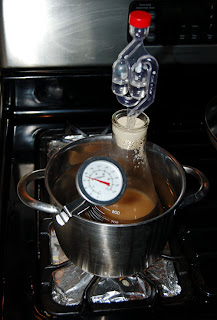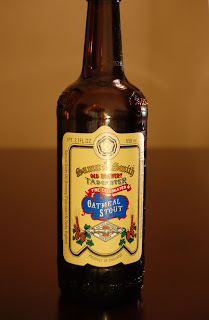 Of the few people who have read my blog, most have commented that the photos look great so I thought I would write a bit about the photography on the blog.
Of the few people who have read my blog, most have commented that the photos look great so I thought I would write a bit about the photography on the blog.One of the food bloggers I really enjoy reading, Clotilde Dusoulier has excellent photography. I emailed her about a year ago complimenting her on her photos, and asking her how she got such natural lighting, and she was kind enough to reply. She places the food in a particular location in her house so that it receives natural light.
When I decided to start this blog, I decided that I would try to place great photos with each article since I think it really adds a lot to the posts. I have a Nikon D50 camera with a 18-55mm zoom lens which is capable of taking excellent photos if I do my part in setting up, so one morning after my 5th or 6th post I looked around the house for a nice place to photograph beer.
I tried several areas, with different surfaces and backgrounds, until I settled on using our dining room table. It has a beautiful dark finish and the wall behind it is a neutral tan color. That first session I took the picture of the Oktoberfest, which is my favorite photo so far. It was about 9:00 am, so after the photo, I had a swallow and then dumped the rest before heading off to work.
Thus the problem: I am always blogging after dark, since I usually taste the beer after my kids are in bed. So if I want to shoot the bottle with a full glass of beer, I either have to shoot it the next morning and dump the beer (NOoooooo!!) or I have to do my own lighting. I have tried a few different setups, none of them particularly pleasing. Some of them came out okay, but most were too yellow. I purchased a halogen work light, and put a florescent bulb in another work light. I suppress the flash on my camera which gives longer exposure, so I need to use a tripod.
A few nights ago I gave up. It was taking 15 -20 minutes to setup and take the shot, then tear down and put things away and that is no fun the 10th night in a row. So two of my favorite beers, the Viscosity and the Brandywine don't have a full glass in the photo since I waited until later to shoot them.
I resolved to come up with a simpler setup, and decided on what you see in the photo above. It is pretty much the same setup, only with a portable tripod that is much quicker to use. I also changed the light positions and focused the florescent light (which tends toward the blue/green portion of the light spectrum) directly on the bottles to offset some of the yellow. My final adjustment was to use the camera's timer so that my finger on the shutter doesn't move the camera and blur the shot.
With this new setup it only takes 5-10 minutes to set up and tear down, then I enjoy the beer and take my tasting notes and relax for the evening. The next morning I load the pictures onto my computer, crop and resize them with Adobe Imageready, and update the post and publish it.



















